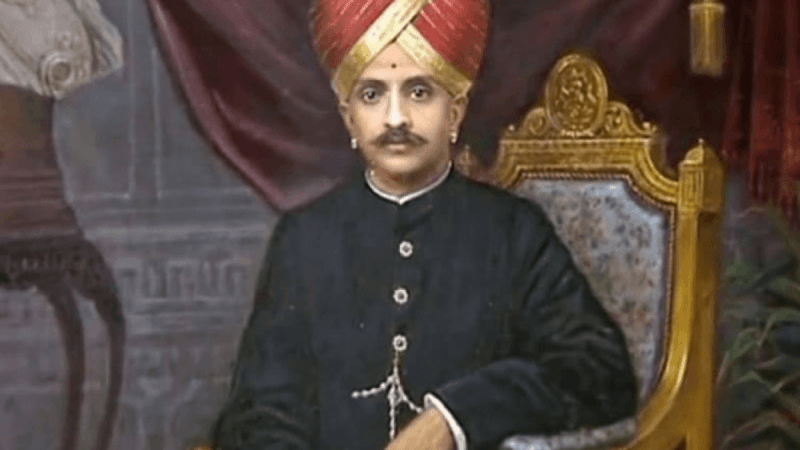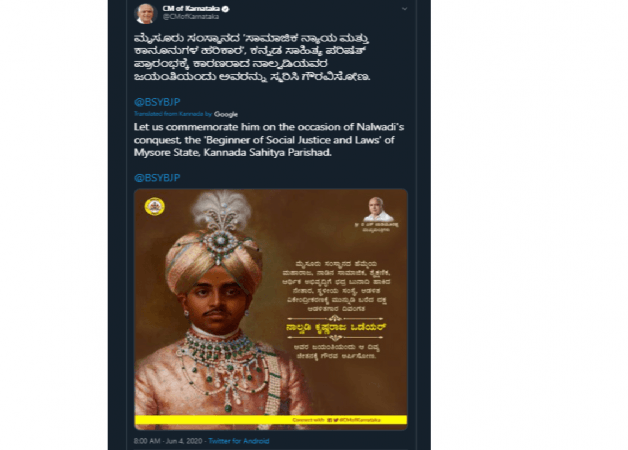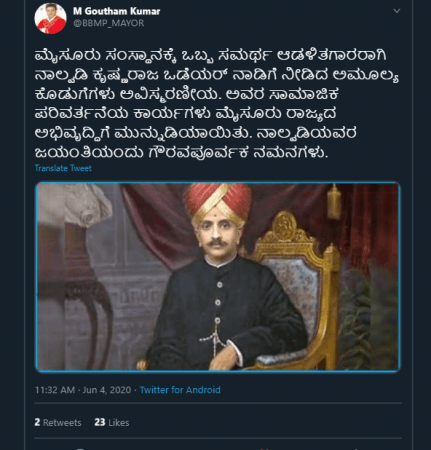One cannot miss the classical photograph in a corner of Bengaluru's bustling KR Market that shows Krishnaraja Wadiyar IV- the name behind one of the biggest flower markets in Asia- seated majestically on an elephant. Apart from this, the state capital also has the Silver Jubilee Park that was renamed to commemorate 25 years of the Maharaja's rule in Mysore.

Even the pioneering Indian Institute of Science (IISc) in Bengaluru was made functional in his reign although the institute was initiated by his mother Maharani Vani Vilas Sannidhana while serving as the regent.
Maharaja Krishnaraja Wadiyar IV, the 24th Maharaja of Mysore is hence emphatically the most influential ruler Karnataka has ever had.
History
The Wadiyar dynasty ruled Mysore for over 500 years since 1399. Profoundly, the Wadiyar rulers are the most remembered and acknowledged administrators of Karnataka, chiefly for their people-friendly style of administration.
Few among the renowned Maharajas from the dynasty are Chamarajendra Wadiyar X, Krishnaraja Wadiyar III, Krishna Raja Wadiyar IV, Jayachamarajendra Wadiyar and Kanteerava Narasimharaja Wadiyar.
Born on 4 June 1884, Maharaja Krishna Raja IV had lost his father when he was just 11 years old. His mother then took the state's rule till the young Maharaja attained the age of majority.
In 1902, there thus heralded a new era for the erstwhile state of Mysore under Maharaja Krishna Raja, who is also known as Nalwadi Krishnaraja Wadiyar.

The richest ruler in history
According to the sources, the Maharaja was one of the richest men on earth with his total wealth estimated around US $400 million in 1940. In terms of the present values, it becomes a whopping $7 billion, although a major portion of this wealth was contributed to the state's educational institutions and other developments.
Crowned at a very early age of 10 years, the Maharaja soon proved his mettle in state administration. Under his rule, says the historians unanimously, Mysuru had its 'golden age.'
"Mysore is the best-administered state in the world," commended Lord John Sankey at the Round Table Conference held in London in 1930.

The most visionary ruler to the state ever, the Maharaja in fact laid the foundation stone to a new India.
Developing educational infrastructure
In 1913, he introduced compulsory primary education, and two years later, he directed all the public schools to give up caste discrimination and admit Dalit students in its classes.
On witnessing Jamshetji Tata's keen interest in establishing a high tech institute, the king generously donated 400 acres of lush green land near Malleshwaram for the project. In addition to this, he was also instrumental in starting Mysore University, the first-ever university in India outside the scope of British administration.
Impressed by his supreme, admirable skill in state administration, renowned English statesman Lord Samuel compared the Maharaja with Emperor Ashoka, the Great. He was called 'Rajarshi' (saintly king) by Mahatma Gandhi.

A student of Western Studies, Kannada, Sanskrit, and classical music, Maharaja has done commendable works on developing the tourism prospects of the state.
Mysore Palace is one of the top tourist destinations in the world. In its list by the New York Times on the highly recommended tourist destinations, Mysore has been featured among the top 5 in the world for consecutive years.
On 3 August 1940, the Maharaja breathed his last.








